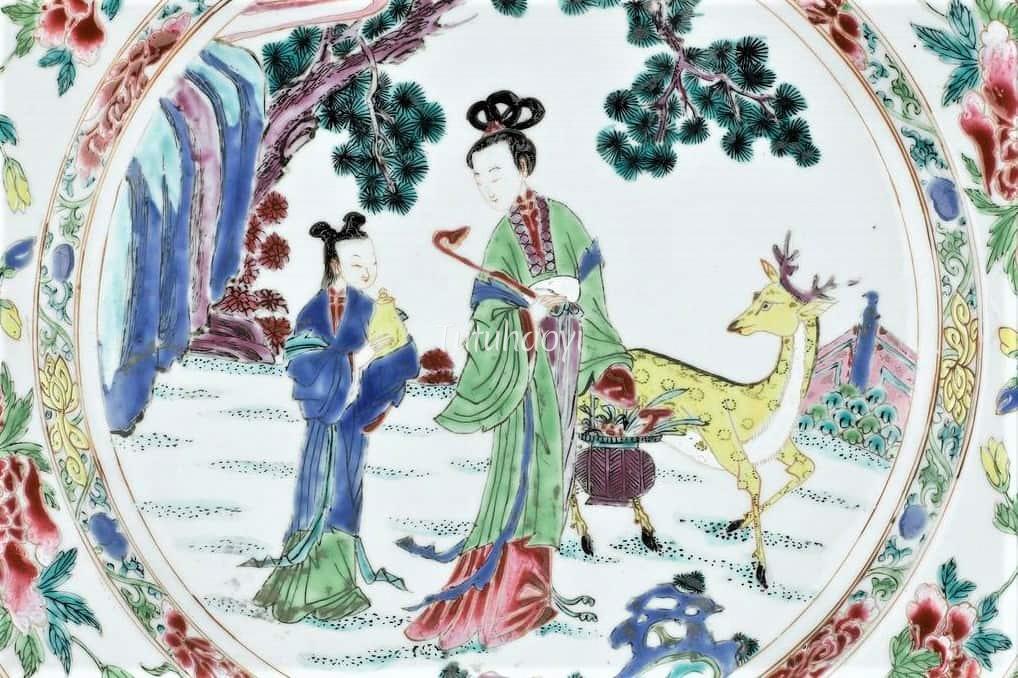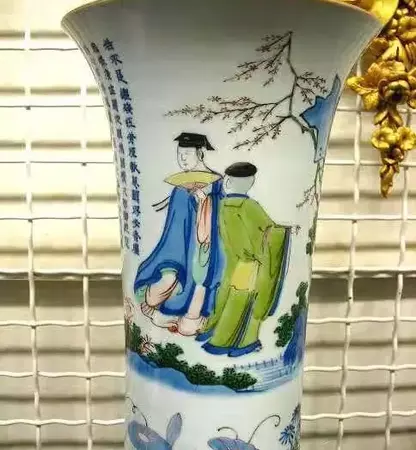The Chinese deeply respect the elderly and consider a long existence – ideally accompanied by health and happiness – to be one of the five most important blessings (wufu 五福) in a person’s life. The most common symbols of longevity in China include personages such as the fairy Chang E 嫦娥 in the Moon Palace 月宫, the Eight Daoist Immortals 八仙, the Longevity God of the South Pole 南极仙翁, Magu 麻姑, Xiwangmu the Queen Mother of the West 西王母 and various immortals and Daoist adepts, animals such as crane 鹤, deer 鹿, and tortoise 龟, plants such as the lingzhi fungus 灵芝, the peach 桃, and the pine tree 松, and objects such as elixir of various forms 仙丹, the emblem of the Eight Daoist Immortals 暗八仙, garden rock 寿石, and the shou 寿 character. Artists skilfully combine different symbols to reinforce the potency of the longevity concept while creating myriad varieties of designs.
On the Palace Museum Song bronze mirror, there are a crane, Daoist adepts, a deer, a box of elixir on the back of the deer, and a pine tree.

On the Song brick-carving screen, there are a crane, immortals, and a tortoise nesting in a lotus leaf.

The following Jiajing porcelain vase from the National Palace Museum, Taipei has a cluster of longevity symbols such as peaches, cranes, deer, lingzhi fungi, pine, and the Shou character shaped out of tree branches.
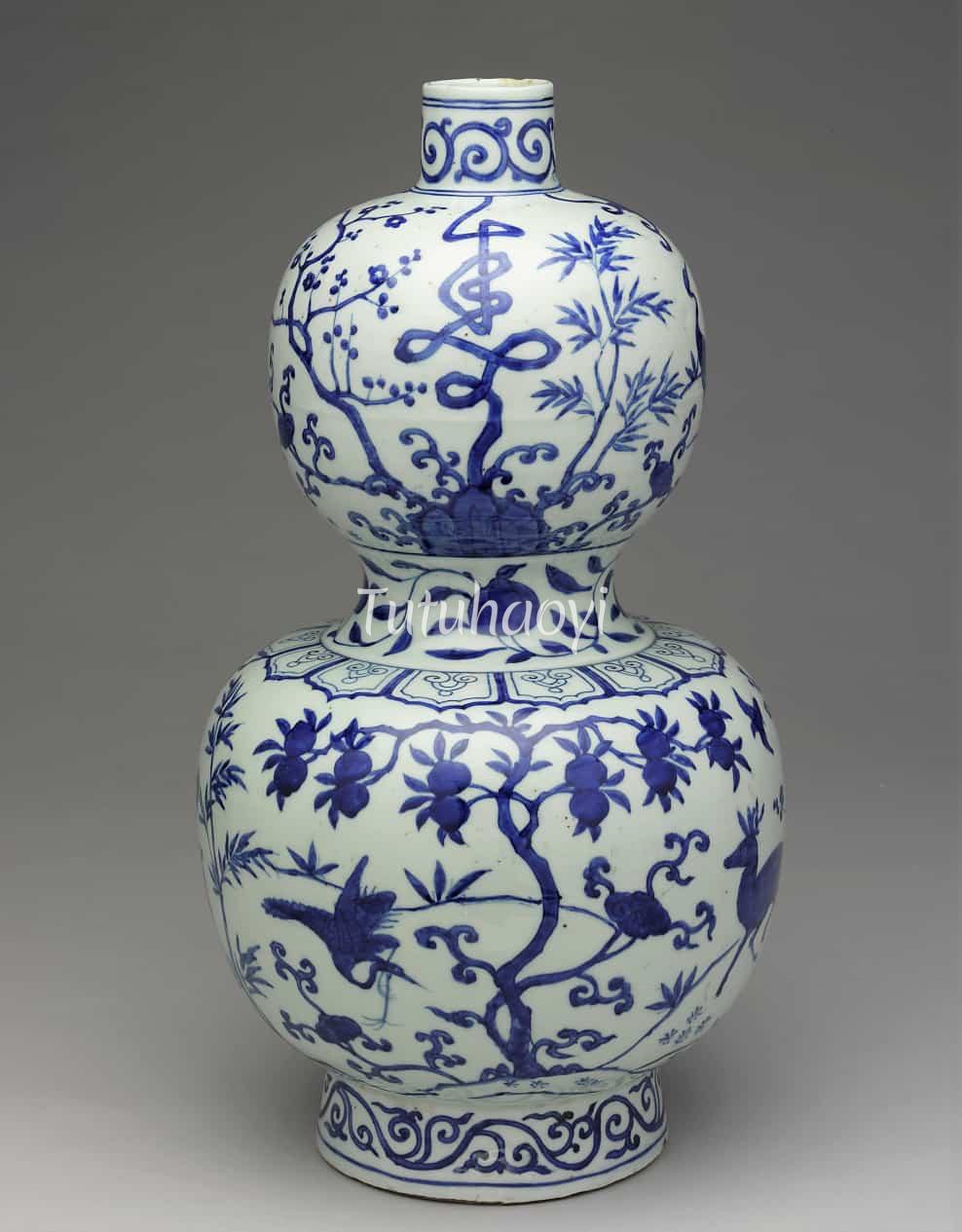
Another porcelain vase with the same double gourd shape in the collection of the Metropolitan Museum of Art, New York bears the same longevity motifs as the one above.
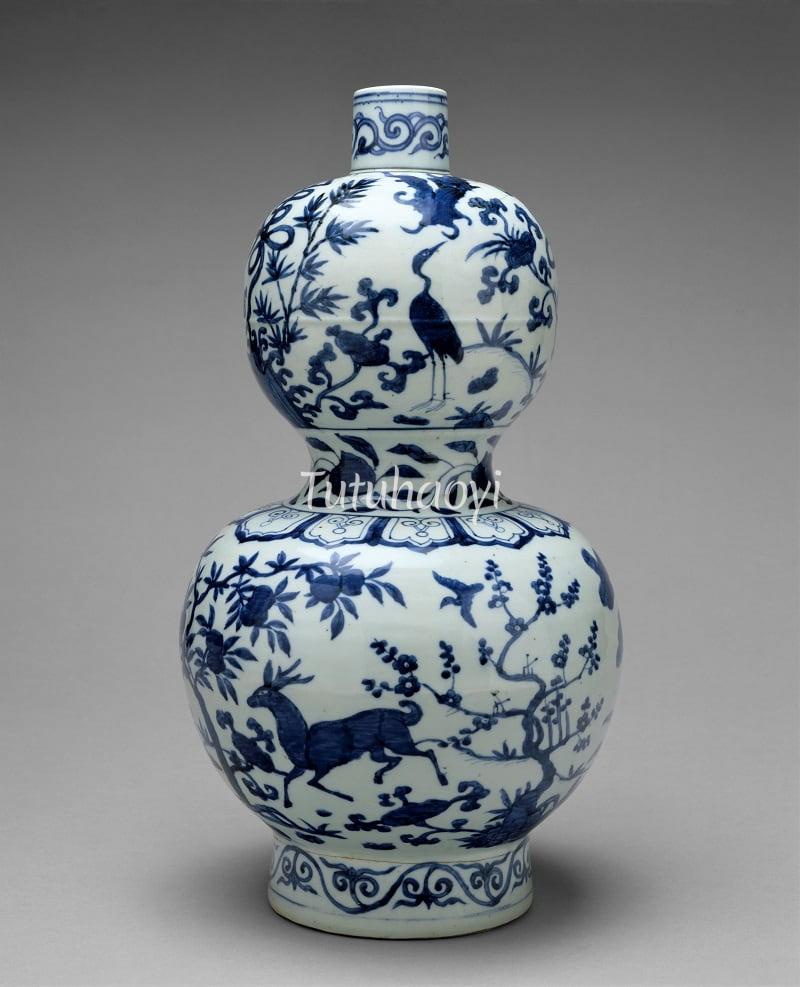


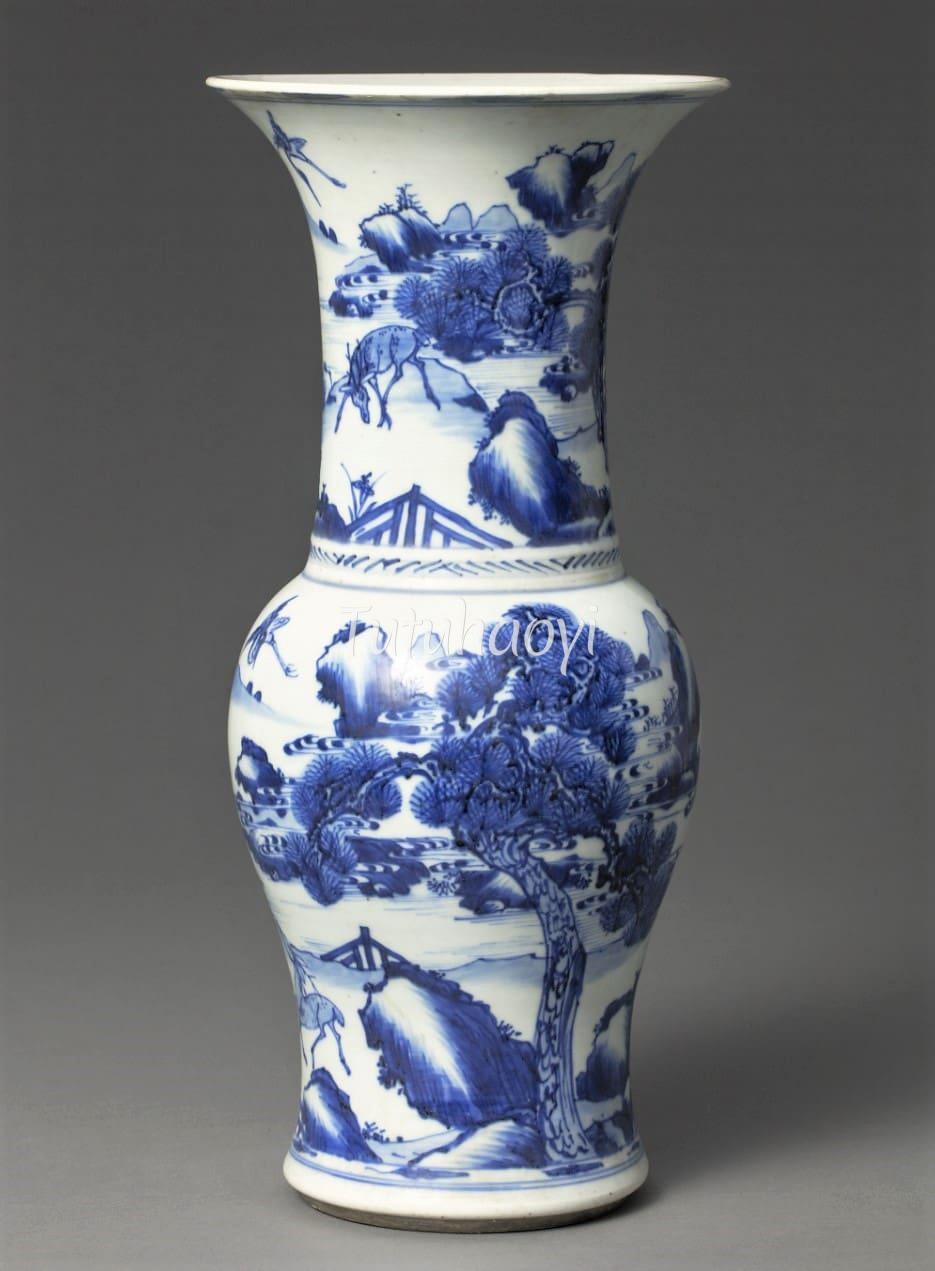



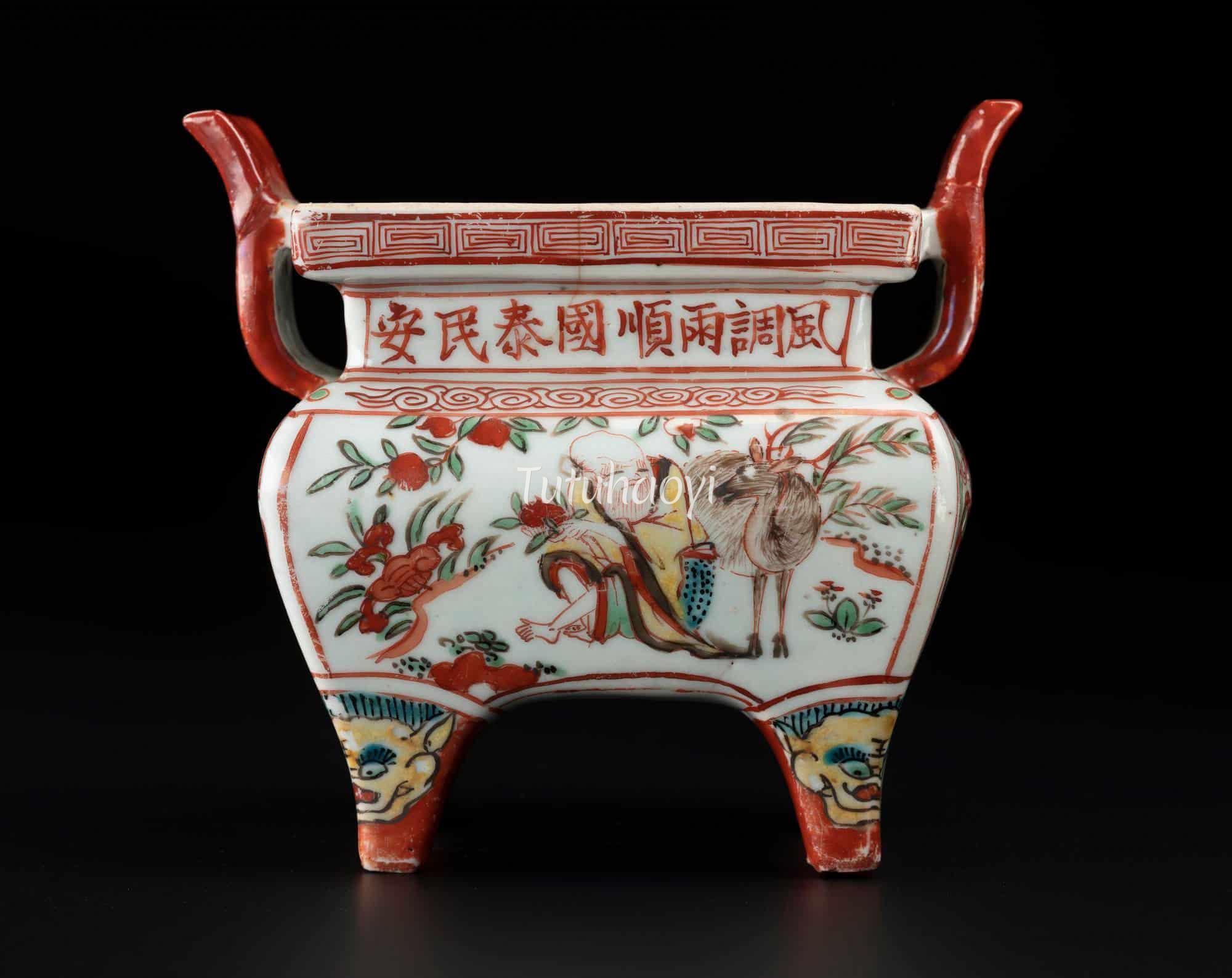
The findings and opinions in this research article are written by Dr Yibin Ni.
